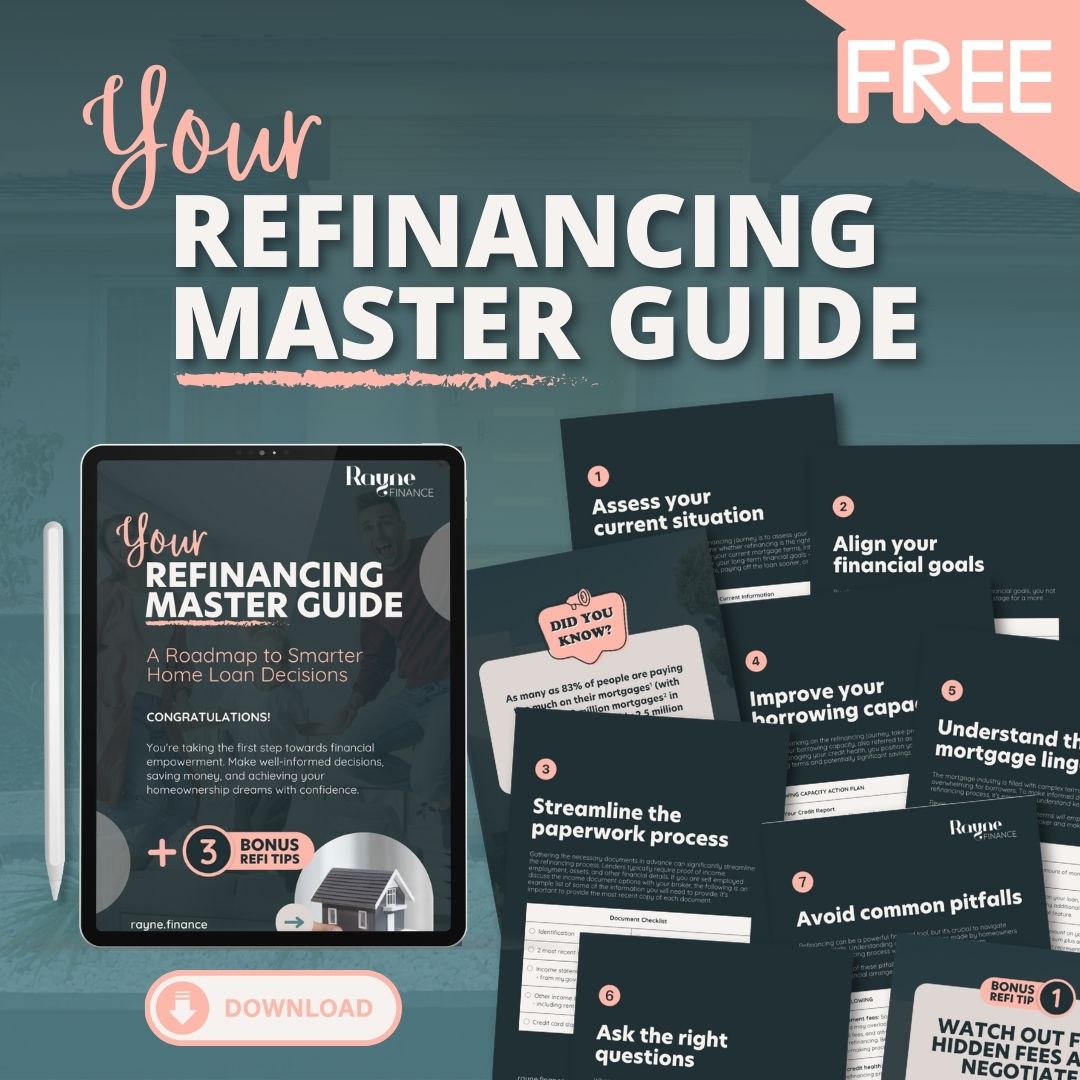If you’ve owned your home for several years, there’s a good chance you’ve accumulated some equity.
Equity is the difference between the value of your home and your outstanding mortgage, and can be expressed as a number or percentage.
For example, if you originally bought a $1 million home with a $200,000 deposit and $800,000 loan, your starting equity would’ve been $200,000 / 20% (while the lender’s would’ve been $800,000 / 80%).
If your home had since increased in value to $1.2 million and you’d reduced your loan to $744,000, your equity would’ve increased to $456,000 / 38%. (That’s because the difference between $1.2 million and $744,000 is $456,000, and $456,000 is 38% of $1.2 million.)
Total equity vs useable equity
The reason equity matters is because you can potentially borrow against that equity and use those funds to renovate your home or put down a deposit on an investment property. In other words, you can convert your paper wealth into functional cash.
You can’t ‘cash out’ all of your equity, because your lender will want you to maintain an equity buffer in your property. That’s to reduce their risk – because if you default on your mortgage and the lender seizes your home, they need to be sure the sale proceeds will cover the outstanding debt.
Generally, lenders are comfortable with homeowners reducing their equity to 20%. It’s possible to go beyond this, but lenders will generally expect the borrower to pay lenders mortgage insurance.
So as a general rule, assume your ‘useable equity’ would be your current equity stake minus 20%. In our hypothetical example, that would be 18% (i.e. 38% minus 20%).
How to capitalise on your equity
As part of the process of tapping into your equity, the lender will generally conduct a formal valuation of your property and expect you to refinance your loan.
That means you’ll need to again prove your creditworthiness to your lender (or your new lender), even if you’ve been making all your mortgage repayments on time.
So it’s best to approach this process as you did when you originally took out your loan, which means restraining your expenses and getting your documents in order.
Is borrowing against your equity right for you?
Cashing out equity can be a clever (and profitable) financial strategy. Bear in mind, though, that it involves risk, because it means taking on more debt, so it’s not suitable for everyone.
Get in touch if you’re thinking about tapping into your equity. We can calculate how much equity you have, explain how you might be able to use that equity, and outline the pros and cons of your options.
If you decide to proceed, we’ll make things easy for you by managing the entire loan application process from start to finish.
Licensing statement: Rayne Finance ABN [70 605 100 838] is authorised under LMG Broker Services Pty Ltd Australian Credit Licence 517192. Disclaimer: (1) As with any financial scenario there are risks involved. This information provides an overview or summary only and it should not be considered a comprehensive analysis. You should, before acting in reliance upon this information, seek independent professional lending or taxation advice as appropriate and specific to your objectives, financial circumstances or needs. This publication is provided on the terms and understanding that: (2) LMG Broker Services Pty Ltd, Rayne Finance (Seed Lending Pty Ltd) and the authors, consultants and editors are not responsible for the results of any actions taken on the basis of information in this publication, nor for any error in or omission from this publication. (3) LMG Broker Services Pty Ltd, Rayne Finance (Seed Lending Pty Ltd) and the authors, consultants and editors, expressly disclaim all and any liability and responsibility to the maximum extent permitted by the law to any person, whether a purchaser or reader of this publication or not, in respect of anything, and of the consequences of anything, done or omitted to be done by any such person in reliance, whether wholly or partially, upon the whole or any part of the contents of this publication.
Explore other FAQs and Facts
How much do you need for a home deposit?
Buying a property but don’t have the deposit in cash right away? There may be an alternative worth considering. In some situations, buyers can provide a guarantee instead of upfront funds. It’s a tool that can offer flexibility without compromising the seller’s confidence, but how does it actually work?
What are deposit bonds and how do they work?
Buying a property but don’t have the deposit in cash right away? There may be an alternative worth considering. In some situations, buyers can provide a guarantee instead of upfront funds. It’s a tool that can offer flexibility without compromising the seller’s confidence, but how does it actually work?
Understanding conditional loan approval
Thinking about buying a property? You’ve probably heard the term “conditional approval” thrown around but what does it actually mean, and how does it differ from unconditional approval? Understanding the difference can help you feel more confident, better prepared, and avoid surprises as you move through the home loan process.
How to use equity to purchase property
Equity in your home can open doors to new financial opportunities, including property investment, renovations, or debt consolidation. It’s about understanding what you’ve built up—and how to use it wisely. With the right guidance, equity can help you move forward with confidence, but it’s important to weigh the benefits and risks.
What are low-doc loans and who are they for?
Low-doc loans offer a solution for self-employed borrowers who lack traditional financial documents like payslips or tax returns. Instead, lenders assess income using BAS, bank statements, or accountant declarations. While these loans provide flexibility, they often require higher deposits and carry stricter conditions, making them best suited for specific borrower situations.
Home loan redraw facilities explained
A home loan redraw facility lets you access extra repayments you’ve made on your mortgage, helping to lower interest while offering flexibility if you need funds later. It differs from an offset account in accessibility and structure, with pros and cons depending on your spending habits and how easily you need to access savings.
Help to Buy scheme and changes to how lenders consider student debt
More Australians could soon enter the property market with just a 2% deposit, thanks to the expanded Help to Buy scheme. Meanwhile, new lending guidance means student debt will now be treated more flexibly, helping younger buyers. These changes aim to make homeownership more accessible for low- and middle-income earners.
What the federal budget means for buying property
The 2025 federal budget introduces key measures affecting home buyers, including an expanded Help to Buy scheme, increased infrastructure investment, and incentives to grow the construction workforce. Foreign investors face new restrictions, and funding for prefabricated homes aims to accelerate supply. These changes could significantly reshape Australia’s property market.
Own your debt before it owns you
Here’s the hard truth: If you’re not in control of your debt, it’s controlling YOU.
Debt doesn’t just sit quietly in the background. It piles up, creeps into your financial freedom, and slowly starts calling the shots. It’s time to flip the script.
Find out how taking control of your debt can restore your financial freedom and bring peace of mind.
Rental growth slows as affordability is stretched
Rental growth slowed in 2024, despite the national median rent rising 4.8% for the year. Affordability pressures led renters to form larger households, easing demand. Meanwhile, increased investor activity added supply, lifting vacancy rates slightly to 1.9%. Still, with rents rising and vacancies low, many investors remain in a strong position.














